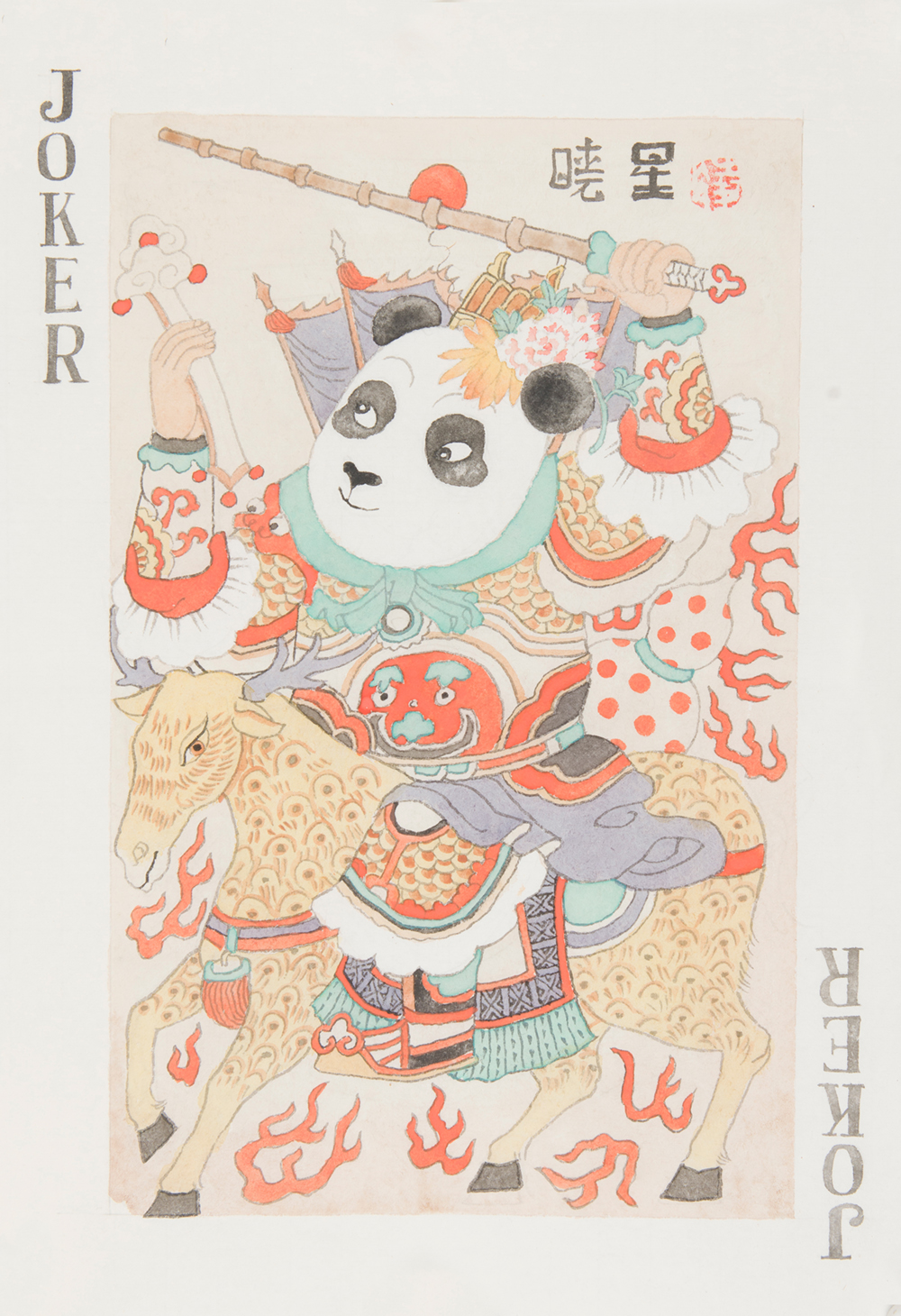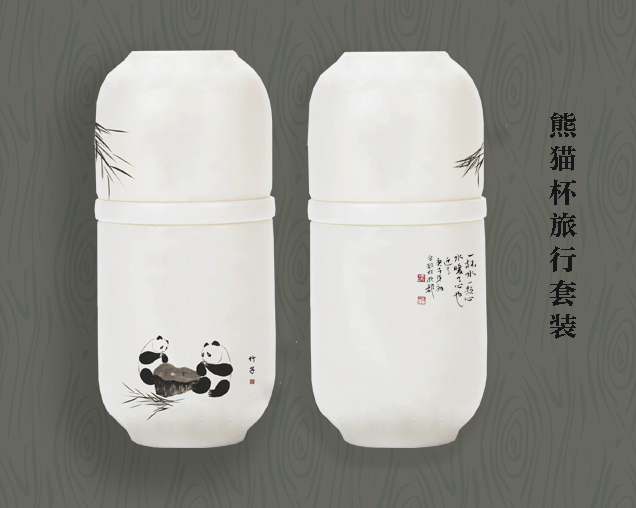记忆中的园区风景(Ground Scenery in the Memory)包林于清华园
时间:2009-12-04 | 来源:包林 |
Since the art institution moves from Guanghua Road near east of the 3rd ring of Beijing to Tsinghua Yuan in Haidian district in 2005, Yuanmingyuan Park became one of my favorite places to visit: not because the glory and shame over one hundred years ago, since what the event has destroyed is the scenery of the royal family, inside the site you can still find emerald green and the glow of sunset. What I am really interested in Yuanmingyuan are those trails buried in weeds and the vestiges of villages which came into being spontaneously and were destroyed by force. More than ten years ago, those feisty people in our generation have been looking for the ideal of Utopia there, and formed an art community outside the power circle. From today’s perspective, their short stays in Yuanmingyuan unexpectedly become one romantic and also painful page of the whole Chinese contemporary art history. It is said that today the Haidian government is very regret to miss the most “beneficial” culture industry. At that time, those misery young artists were banished from Yuanmingyuan, and they looked for their shelter towards east, toward the sunglow, and finally they found the Song Village in Tongzhou at the banks of Chaobai River. Ten years ago I went to the Village to visit friends; it was still just like the most common countryside in Beijing suburb and the artists had a very hard time, but they never complained about this: on one hand they drew, on the other hand they took care of their rural life. You could see hope in their eyes. While today the Village seems already being the cradle of a contemporary myth, there officers, farmers, businessmen, artists satisfy of one and all, and a spectacular artistic ecological-chain has formed. At the entrance of the village where hangs the bronzing words “China Song Village”, I encountered several students who just graduated from the institution and came here. During the conversation with them, I found here has already become the “base” where young artists desired. Yang Wei and Hong Feng have told me about “the miracle in Song Village” and both of them believed that the miracle came into being too sudden and too fast to accept for those elder artists who have experienced the Yuanmingyuan era.
尽管如此,从昔日的圆明园画家村到当下的中国宋庄,脐带没有断,那本是一种生活方式的存在,一种自由精神的存在。如今的我驻足圆明园,心系着宋庄,包括在那里创业的朋友,那远离皇家风水的潮白河畔。
From the art community in Yuanmingyuan to the Song Village nowadays, the umbilical cord of art is always there and never been cut off. That is a way of life, an existence of free spirit. Now although I walk in Yuanmingyuan, my heart is in the Village together with my friends who set up their business there; I am thinking about the banks of Chaobai River far away from the royal Fengshui.
宋庄有了气场,便引来各路好汉。我要说的是李铁军,北京当代艺术馆的主持人,一位精力充沛的艺术家。他上个世纪90年代初去了玻利维亚,那是切?格瓦拉战斗过的地方,然后又在西班牙求学,回国后便选择在宋庄安营扎寨。北京当代艺术馆坐落在宋庄的一片葱翠林场中,灰墙、高矮不一的旗杆、碎石路。在没有展览开幕式的日子里,这里更像一处私人会所。铁军引我到后院的天光工作室,有曲径通幽,伴着雨后的蝉鸣、雾霭和林间散布的雕塑,眼前的一切几乎完全抹杀了十年前宋庄给我的记忆。
Song Village has attracted many talented people from various fields with its unique charm. Here I am talking about Li Tiejun, the director of Beijing Museum of Contemporary Art (MOCA), an energetic artist. In 1990s, he went to Bolivia, where Che Guevara has strived in and then he went to Spain to study. He chooses Song Village to be his base after he came back to China. Beijing MOCA sits in verdant woods in the Village; grey walls, mast of different heights, gravel road make the place much more a private club than a museum if there is no exhibition opening ceremony. Tiejun lead me to Tianguang Studio in the backyard. The winding path, the sound of cicada after the rain, the fog and the sculptures scatter in woods, all these sceneries has almost wiped away my memory of the Village ten years ago.
这么宁静的环境本该享受,铁军却在宁静中画出了《园区风景》、《雾》、《大自然》、《花狗》等具有震撼力的系列作品。他的画均为大尺度的黑白灰单色处理,画面朦胧,似景非景,莫不是铁军在多年的闯荡中混淆了记忆的边界?而在完成的画面上,色浆的肆意挥洒和流淌又在割裂那些模糊的形象,莫不是铁军有意要用暴力来破坏风景的静谧?我无意追问艺术家在这些画中想说什么,但我关注他的言说方式,他对温文尔雅的山水画及书法传统有着一种缅怀式的日常操练,我想他从中汲取的养分也会影响到自身对园区风景的表达。
In such a peaceful environment, people originally should enjoy life, but Tiejun creates series of work which had great impact, such as The Ground Scenery, Fog, Nature, and Colored Dogs. All his paintings are in large size, with black, white or grey color. The vague frame makes the scenery not like scenery. Does he mix up the boundary of memory in his years of adventure? And in his finished works, the indulged use and flow of colours and inks tear up those vague images. Is he deliberately using violence to destroy the peace of the scenery? I do not intensively want to know what the artist want to review in his paintings, what I am more concerned is his way of speaking. Tiejun has a yearning daily practice of gentle landscape paintings and calligraphy, and I believe his benefit from that will affect his expression of ground sceneries.
如同我有着记忆中的宋庄,铁军也有着记忆中的园区风景。记忆是我们生命中最为重要的价值体验,它混淆时间和空间,甚至完全抛开了它们,让形象时而模糊时而清晰。人们大都借助摄影术来保留记忆,而铁军则是把记忆本身直接写在画面上,从造型语言的角度看,形象的不确定性可以有效阻止宏大叙事的编织,因而让艺术家所有想说的只能是暗示,这里没有再现,更没有教谕。
Like me keeping the memory of Song Village, in Tiejun’s memory, there is also unique ground scenery. Memory is the most important value experience in our life. It mixes the time and space, even put aside of them, making the image sometimes vague and sometimes clear. Most people use photographing to keep their memory, while Tiejun put it directly on his paintings. From the view of molding language, the non-determinacy of image could prevent massive narration effectively, thus makes all artist’s saying just a hint. There is no recurrence, no lecture.
一般而言,风景得以进入人的视野,是因为人的在场,因此场域不是宽泛的、抽象的自然空间,而是生命个体得以呈现的具体环境,在铁军这里“场域”被转化为具体的“园区”。可以说当代人的生存“园区”不仅充满着人与人之间的利益冲突或文化冲突,同时也充满着人与物之间,或人与存在之间的矛盾。心理学中所说的“风景失忆”往往是这种矛盾冲突的表现。如铁军作品中出现的公共汽车、铁轨、飞机等现代技术的产物虽让人司空见惯、习以为常,但其背后隐藏着对人的生存挤压和统摄力,一种人们无意识地自甘承受的理性规则。或许,李铁军的绘画只能以一种既朦胧又“暴力”的方式表达出个体生命在当代技术体系中脆弱的存在。
Generally speaking, people could see scenery because people are there, thus the ground is not a general and abstract natural space, but a specific environment where living individuals could express themselves. Tiejun change “space” into specific “ground”. We can say the “ground” where modern people live is not only full of beneficial conflicts and cultural conflicts between people and people, but also full of contradictions between people and thing, or people and being. “Scenery Amnesia” in psychology is usually an expression of such conflict and contradiction. Bus, railway and plane, all those modern technological items in Tiejun’s works are very common to people, but behind them are the living pressure of people, the reasonable rule which people would like to bear unconsciously. Maybe, Tiejun’s painting could only use a vague and “violent” way to express the weak existence of individual life in contemporary technology system.
人在“园区”中观看和画画,那么感悟在继续,记忆也在延续,而且是在巨大的不确定性中延续。从圆明园到宋庄,近二十年来中国城乡的巨大变化让那些记忆中的风景变得支零破碎,公共景观的建造一边在编织宏大叙事,一边在不断掏空我们生命记忆中鲜活的细节,从而也让个体之间的差异变得模糊。是的,我们现在已经习惯于权力镜头中气势恢宏的大风景,园区在一个个兴建,风景在一点点变幻,留给我们的只是观看的彷徨。
Inside the ground district, people see and paint, the understanding is continuing, so is the memory, continues in great non-determinacy. From Yuanmingyuan to Song Village, during 20 years, the great upheaval of the cities and countries in China has shattered the scenery in memory into pieces; the construction of public sight on one hand make up the great narration of the era, on the other hand clean up the fresh details in our living memory step by step, thus it also makes the discrepancy between individuals indistinct. For sure, we are used to those imposing large sights from the lens of power; the ground district is building one by one, the scenery is changing little by little, and what leave to us is only watch in wander.
可以说,从模糊的记忆到当下现实的园区风景,李铁军在画面上一再质疑形象的不确定性,用矛盾的语言表达来拒绝矫饰的写实主义。我以为他是一位既横向拓展自己的实验领域,又进行纵向思考的艺术家。所谓横向和纵向,亦即是对东方与西方,传统与当代的一种立场选择,这种选择决定着艺术家的视野和判断。我们看到与改革开放同步的中国当代艺术已不再提供美容功效,它只是一份在社会情景的剧烈变化中具有人文关怀的现实主义记录,一份预防失忆的档案。
From vague memory to the realistic ground scenery, Li Tiejun continually to question the non-determinacy of image in the frame of painting, using contradictive expression to refuse mannered realism. I think he is an artist who expand his own experiencing field horizontally and also think vertically. Speaking of horizontal and vertical, it is also a choice between east and west, tradition and contemporary. Such kind of choice determines the view and judgment of the artist. We see that Chinese contemporary art which is synchronous with the reforming and opening up could no more provide the beauty making effect. It is only a humanistic realism record in the dramatic change of social situation, a file to prevent amnesia.
从圆明园坎坷走来,或从欧美洗礼归来,今日的中国宋庄不问英雄出处,只是在不断聚积着能量,这里不仅是新时期农村包围城市的根据地,同时也是在时间和空间两条轴线上新一轮美学建构的交叉点,我相信李铁军这位充满激情、能量和智慧的艺术家已经确定了自己的价值抉择。
Either with the frustration in Yuanmingyuan or with the adventure of western world, the Village doesn’t care about where those people are from. Energy gathers continuously here. It is not only a base of “city bounded by countryside” in the new era, but also a new round aesthetic construction junction of time axis and space axis. I believe Li Tiejun, the artist full of energy, power and wisdom, has already determined his choice of value.
包林
清华园
2009-08-15
Bao Lin
Tsinghua Yuan
2009-08-15
>相关报道:
- ·痴迷书法 甘之如饴——书法家王远之其人其书[2021-07-27]
- ·关于爱的美学随笔 罗国正[2019-06-19]
- ·用美学与公益结合的维度去看: 人类活动有四条重要规律 罗国正[2019-04-20]
- ·形神兼备 雅俗共赏——品读孟超花鸟画艺术[2019-01-30]
- ·中有风雷老将心:西沐先生艺术经济建构随想[2019-01-17]
- ·非遗传承人——唐卡世家 仁青当周[2018-11-14]
热点新闻
艺术家推荐
更多...曹辉 1952年生于成都。中国美术家协会会员,国家一级美术师,四川美术家协会理事、四川美术家协会中国画艺委会人物画专委会特邀委员、成都中国画会副会长、成都大学中国东盟艺术学院客座教授,硕士生校外导师,成都惠民职工画院顾问。上世纪八、九十年代,其连环画作品多次获得全国大奖。1999年国画《川妹子出川图》获文化部全国第八届“群星奖”银奖;1990~1998年连续在法国举办五次个人作品展。2011年获第一届四川省工笔画学会作品展暨中国工笔画名家邀请展银奖。2014年作品《锦江花月夜》参加四川省诗书画院三十年创作成果展•全国书画名家作品邀请展。2015年作品参加在中国国家画院美术馆举行的“新中国美术家系列·四川省国画作品展”;2016年在四川美术馆举办个人作品展;2016年12月作品受邀参加“回望东坡“2016四川中国书画创作学术邀请展;2017年3月作品受邀参加水墨四川 ——名家作品邀请展;2017年5月作品《锦官城外》受邀参见“守墨鼎新”四川省政协书画研究院作品展;2017年8月作品《年夜饭》参加在香港会议展览中心举办的全球水墨画大展;2018年1月27日在香港云峰画苑总部举行“昔日情怀--曹辉艺术作品展”,并由此开始为期一年的全国巡展。 曹辉1982——2002年发表作品: 《神奇的武夷山悬棺》连环画《奥秘》画报 1982年4期 《给上帝的一封信》连环画《连环画报》 1983年3期 《神秘的大旋涡》连环画《奥秘》画报 1983年2期 《野人之谜新探索》连环画《奥秘》画报 1984年1期 《女子足球运动》连环画《奥秘》画报 1985年5期 《女子马拉松》连环画《奥秘》画报 1985年2期 《小酒桶》连环画《连环画报》 1984年3期 《神秘的石室》连环画《奥秘》画报 1984年4期 《战神之墙》连环画《奥秘》画报 1985年9期 《笔录奇观》连环画《奥秘》画报 1985年11期 《古代美容》连环画《奥秘》画报 1986年6期 《一个女研究生的堕落》连环画广东《法制画报》 85年1、2期 《一个投案者的自述》连环画广东《法制画报》 85年17期 《ET外星人》连环画《奥秘》画报 85年4、5期 《孟卖大爆炸》连环画《奥秘》画报 1987年5期 《热爱生命》连环画《奥秘》画报 1989年1期 《驼峰上的爱》连环画《奥秘》画报 1989年9期 《青鱼》连环画《连环画报》 1985年3期 《珍珠》连环画《连环画报》 1986年3期 《菩萨的汇款》连环画《连环画报》 1985年9期 《小耗子》连环画《连环画报》 1986年10期 《水手长接替我》连环画《中国连环画》 1986年10期 《征服死亡的人》连环画《中国连环画》 1987年6期 《小酒桶》 连环画中国农村读物出版社再版 1985年11版 《给上帝的一封信》 连环画中国连环画出版社再版 84年3期 《日本国技.相扑》 连环画《奥秘》画报 1986年1期 《圣地亚哥刑场》 连环画《奥秘》画报 1987年10期 《古诗意画》 国画 四川美术出版社 1987年5版 《人蚊之战》 连环画 科学文艺 1988年1期 《跳水 》 连环画 《万花筒画报》 1988年2期 《他们与“森林野人”》连环画《奥秘》画报 1988年3期 《圣地亚哥刑场》 选刊 《中国连环画艺术》 1988年3版 《关于圣地亚哥刑场的通信》 论文 《中国连环画艺术》 1988年3版 《阿拉斯加的奇遇》 连环画《奥秘》画报 1989年1期 《祭火》 连环画 《中国连环画艺术》 1989年6版 《辟古奇谭》 连环画《奥秘》画报 1989年6期 《玛丘皮丘》连环画《奥秘》画报 1989年9期 《医生.夫人.闹钟》连环画《奥秘》画报 1990年1期 《南.马特尔之谜》连环画《奥秘》画报 1990年10期 《泉神娶妻》连环画《奥秘》画报 1991年1期 《中国民族民俗故事》 连环画明天出版社出版 1991年1版 《船儿水上飘》 国画 蓉城翰墨 1991年12版 《萨克奇野人的俘虏》连环画《奥秘》画报 1991年10期 《圣经的故事》 连环画四川美术出版社 1992年1版 《雪莲洞探秘》连环画《奥秘》画报 1992年2期 《艾科沟之谜》连环画《奥秘》画报 1992年5期 《印度河文明之谜》连环画《奥秘》画报 1993年1期 《干冰杀人案》连环画《奥秘》画报 1993年5期 《白色幽灵》 连环画 《中国连环画》 1993年4期 《悬棺之谜新解》连环画《奥秘》画报 1993年8期 《冤家变亲家》连环画《连环画报》 1993年10期 《一棵遗落在荒原的种子》连环画《连环画报》 1994年6期 《世界名人传记.艺术家卷 米勒篇 》 连环画浙江少儿社 94年一版 《巴仑克之谜》连环画《奥秘》画报 1994年10期 《辟古奇尼》连环画《奥秘》画报 1995年5期 《豹狼的日子》 上、下连环画 中国连环画出版社 1992年10版 《冬之门 》连环画《中国连环画》 1995年8,9期 《神农架野人今安在》连环画《奥秘》画报 1997年1期 《寻觅玛雅古城》连环画《奥秘》画报 1997年10期 《白鹤梁探秘》连环画《奥秘》画报 1998年1期 《尊严》连环画《中国连环画》 1998年2期 《神秘的南美大隧道》连环画《奥秘》画报 1999年2期 《名医入地彀》连环画《连环画报》 1999年6期 《神秘的英国巨石圈》连环画《奥秘》画报 1999年5期 《蜀王陵出土记》 连环画《奥秘》画报 2000年8期 《定数》连环画《连环画报》 2000年10期 《印山大墓揭秘》连环画《奥秘》画报 2001年5期 《冰封印加之谜》连环画《奥秘》画报 2001年8期 《“狼人”之谜》连环画《奥秘》画报 2002年1期 《扣开通往远古的大门》连环画《奥秘》画报 2002年4期 曹辉艺术年表: 2020年1月在成都举办“陌上谁人依旧 · 曹辉民国风人物画展” 2019年11月作品受邀参加四川省诗书画院主办的“回望东坡•2019四川中国书画学术邀请展” 2019年8月中山(南区)云峰画苑于举办《昔日情怀-曹辉艺术作品展》 2018年10月作品受邀参见“天府百年美术文献展” 2018年1月27日在香港云峰画苑总部举行“昔日情怀--曹辉艺术作品展” 2017年8月作品《年夜饭》参加在香港会议展览中心举办的全球水墨画大展 2017年5月作品《锦官城外》受邀参见“守墨鼎新”四川省政协书画研究院作品展 2017年3月作品受邀参加水墨四川 ——名家作品邀请展 2016年12月作品受邀参加“回望东坡“2016四川中国书画创作学术邀请展 2016年6月 在四川美术馆举办个人作品展 2016年5月 作品《绣娘》参加成都重大题材美术创作工程开篇之作——南方丝绸之路美术作品展 2015年11月 作品《故园旧梦》入选第二届“四川文华奖”美术书法展,并获三等奖 2015年11月 作品参加由四川省艺术研究院主办的“2015四川中国画创作学术邀请展” 2015年10月 作品《西厢待月》参加在重庆举办的“中国精神•民族魂——中国知名画派邀请展” 2015年10月 作品《故园旧梦》参加“从解放碑到宽巷子”2015成渝美术双百名家双城展 2015年9月 作品参加成都市推广天府画派办公室主办的“传神写照•2015水墨人物画邀请展” 2015年8月 特邀参加成都市推广天府画派办公室主办的“心里画儿•中国画邀请展” 2015年5月 特邀参加由四川省美协和四川省美协中国画艺委会联合主办的“四川省中国画人物画作品展” 2015年4月 参加在中国国家画院美术馆举办的“新中国美术家系列•四川省国画作品展” 2014年 作品《锦江花月夜》参加四川省诗书画院三十年创作成果展•全国书画名家作品邀请展 2014年7月 三幅作品参加“南方丝绸之路”主题创作展 2011年5月 在成都东方绘画艺术院(现在的二酉山房)举办“曹辉人物画作品展” 2011年3月 《曹家大院•家训》获首届四川工笔画学会作品展暨中国工笔画名家邀请展银奖 1999年 国画《川妹子出川图》获文化部全国第八届“群星奖”银奖 1999年 连环画《名医入彀》获《连环画报》“十佳”优秀绘画奖 1998年8月 在法国圣雷米市BAYOL画廊举办第五次个展 1996年 作品《寻找北斗》获四川省优秀作品奖 1995年7月 在法国圣雷米市BAYOL画廊举办第四次个展 1993年9月 在巴黎“中国之家”画廊举办第三次个展 1993年 连环画《白色幽灵》获《中国连环画》“十佳”作品奖 1991年5月 在巴黎亚洲民俗艺术博物馆举办第二次个展 1990年3月 在巴黎亚洲民俗艺术博物馆举办第一次个展 1990年 连环画《圣地亚哥刑场》获《奥秘》画报1985~1990年“十佳”优秀作品奖 1989年 连环画《圣经的故事》《青鱼》入选第七届全国美展,获四川省优秀作品奖 1986年 连环画《罗瑞卿的青少年时代》获第三届全国连环画评奖三等奖 1981年 国画《新户头》获四川省优秀作品奖详情>>



 保存
保存 打印
打印



最新评论
已有0条评论,共0人参与